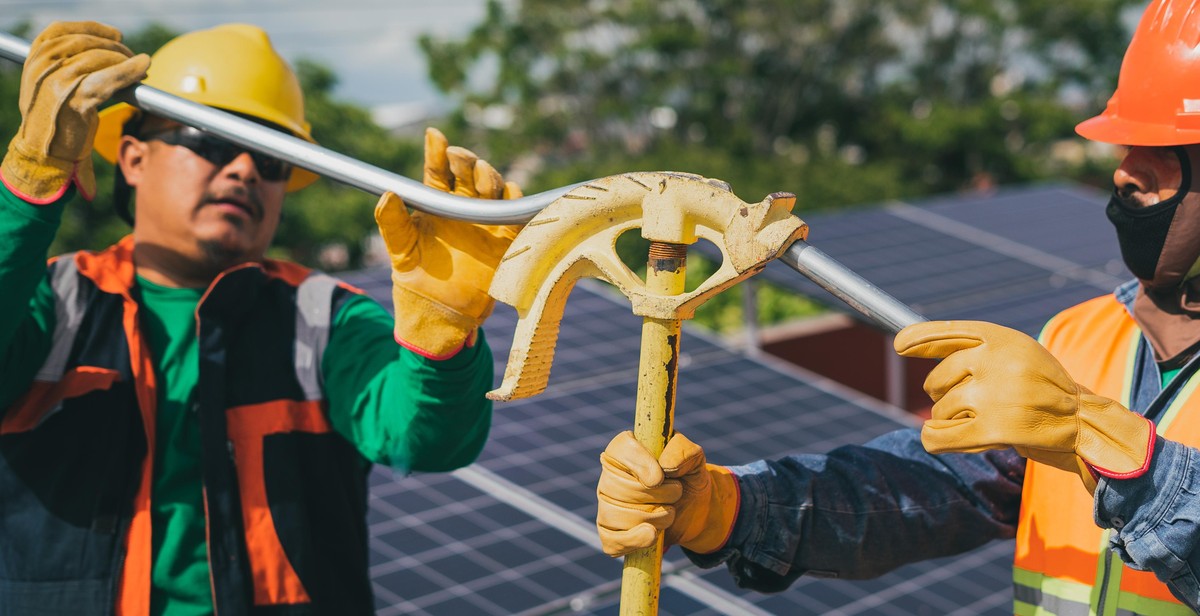Introduction: How to Create a Bee-friendly Apartment Garden: Planting Flowers and Providing Water Sources
Bees are essential pollinators that play a crucial role in maintaining the balance of our ecosystem. Unfortunately, their populations have been declining in recent years due to habitat loss, pesticide use, and disease. As gardeners, we can help support bee populations by creating bee-friendly gardens, even in small spaces like apartment balconies or windowsills.
Why create a bee-friendly garden?
Creating a bee-friendly garden not only helps support bee populations but also benefits your apartment garden in several ways. Bees are excellent pollinators that can increase the yield and quality of your plants and flowers. They also help increase biodiversity and attract other beneficial insects to your garden.
Benefits of having a bee-friendly apartment garden
- Increased yield and quality of plants and flowers
- Increased biodiversity in your garden
- Attract other beneficial insects to your garden
- Support bee populations and help maintain the balance of the ecosystem
In this article, we will provide you with tips on how to create a bee-friendly apartment garden by planting flowers and providing water sources. These tips are easy to follow and can help make a big difference in supporting bee populations and creating a beautiful, thriving apartment garden.

Choosing the Right Flowers
Choosing the right flowers is the most crucial step in creating a bee-friendly apartment garden. Bees are attracted to flowers that provide nectar and pollen. Here are some factors to consider when selecting flowers:
Native Flowers vs Non-native Flowers
Native flowers are the best choice for attracting bees because they have evolved to thrive in the local climate and soil conditions. They are also more likely to provide the nectar and pollen that bees need. Non-native flowers may not provide the same benefits to bees and may even harm the local ecosystem by outcompeting native plants.
Flowers that Bloom in Different Seasons
Bees need a consistent supply of food throughout the year. By planting a variety of flowers that bloom in different seasons, you can ensure that bees have access to nectar and pollen year-round. Some examples of flowers that bloom in different seasons include:
- Spring: Crocus, Daffodil, Lenten Rose
- Summer: Lavender, Sunflower, Coneflower
- Fall: Goldenrod, Aster, Sedum
Colors and Shapes that Attract Bees
Bees are attracted to flowers with bright colors, particularly shades of blue, purple, and yellow. They also prefer flowers with simple, open shapes that allow easy access to nectar and pollen. Some examples of flowers that are particularly attractive to bees include:
| Color | Flower |
|---|---|
| Blue | Borage, Bluebell, Forget-Me-Not |
| Purple | Lavender, Salvia, Catmint |
| Yellow | Sunflower, Marigold, Goldenrod |
By choosing a variety of flowers that bloom in different seasons and have different colors and shapes, you can create an attractive and bee-friendly apartment garden.

Planting Tips for a Bee-friendly Apartment Garden
Creating a bee-friendly apartment garden requires careful consideration of container sizes and materials, soil type and fertilization, and flower arrangement for optimal bee attraction. Here are some tips to help you get started:
Container Sizes and Materials
When choosing containers for your apartment garden, consider the size and material carefully. Bees are attracted to a variety of flowers, so choosing containers of different sizes and shapes will allow you to plant a variety of flowers to attract bees. The size of the container should be appropriate for the size of the plant you want to grow. For example, larger plants like sunflowers will require larger containers than smaller plants like lavender.
Materials for containers can vary, but it’s important to choose materials that are safe for the plants and the bees. Avoid using containers made from toxic materials like lead, copper, or zinc. Instead, opt for containers made from plastic, ceramic, or terra cotta.
Soil Type and Fertilization
The type of soil you use in your apartment garden is important for the health of your plants and the bees that visit them. Bees are attracted to healthy plants, so using a high-quality potting mix with compost or organic matter will provide the nutrients your plants need to thrive. Avoid using soil from your garden, as it may contain pests or diseases that could harm your plants.
Fertilization is also important for the health of your plants. Be sure to choose a fertilizer that is safe for bees and follow the instructions carefully. Over-fertilizing can harm your plants and the bees that visit them.
How to Arrange Flowers for Optimal Bee Attraction
When arranging your flowers, consider planting them in groups of the same species. This will make it easier for bees to find the flowers they are looking for. Be sure to include a variety of flower shapes and colors to attract different types of bees.
Plant flowers that bloom at different times of the year to provide a consistent food source for bees throughout the growing season. Bees are also attracted to flowers with a strong fragrance, so consider planting herbs like basil, rosemary, and thyme in your apartment garden.
Finally, avoid using pesticides and herbicides in your apartment garden. These chemicals can harm bees and other beneficial insects. Instead, opt for natural pest control methods like companion planting and hand-picking pests.
| Container Sizes and Materials | Soil Type and Fertilization | How to Arrange Flowers for Optimal Bee Attraction |
|---|---|---|
| Choose containers of different sizes and shapes | Use a high-quality potting mix with compost or organic matter | Plant flowers in groups of the same species |
| Avoid using containers made from toxic materials like lead, copper, or zinc | Choose a fertilizer that is safe for bees | Include a variety of flower shapes and colors |
| Opt for containers made from plastic, ceramic, or terra cotta | Avoid using soil from your garden | Plant flowers that bloom at different times of the year |

Providing Water Sources
Bees need water just as much as they need nectar and pollen. Water is essential for cooling the hive and diluting honey for consumption. Additionally, bees need water to dilute crystallized honey and to feed young bees.
Different Types of Water Sources
There are several types of water sources that bees can use:
- Open bodies of water such as ponds or streams
- Shallow bird baths or dishes
- Watering cans or drip systems that provide a slow and steady flow of water
It is important to note that bees prefer shallow water sources that are less than 2 inches deep. This is because they cannot swim and risk drowning in deeper water.
How to Provide Water without Creating a Mosquito Breeding Ground
While it is important to provide water sources for bees, it is equally important to prevent the breeding of mosquitoes. Mosquitoes can lay their eggs in standing water, which can lead to a mosquito infestation.
To prevent this, it is recommended to:
- Change the water in bird baths or dishes at least once a week
- Use a drip system or watering can to provide a slow and steady flow of water
- Add a small amount of sand or rocks to shallow water sources to prevent mosquitoes from laying their eggs
- Use mosquito dunks or natural mosquito repellents that are safe for bees
By providing bees with a safe and accessible water source, you can help ensure that they have everything they need to thrive in your apartment garden.

Maintenance and Safety
Creating a bee-friendly apartment garden requires regular maintenance to keep the plants healthy and blooming. Here are some essential maintenance tips:
Pruning and Deadheading
Pruning and deadheading are essential tasks to keep your garden neat and tidy. Pruning involves cutting back overgrown branches or stems, while deadheading involves removing spent blooms. Both tasks encourage new growth and promote healthy plants. Be sure to use sharp pruning shears and cut at a 45-degree angle to prevent damage to the plant.
Organic Pest Control Methods
Preventing pests is crucial to maintaining a healthy garden. Organic pest control methods involve using natural remedies to deter pests, such as companion planting, neem oil, and insecticidal soap. These methods are safe for bees and other beneficial insects.
Safety Tips for Handling Bees
While bees are essential to a healthy garden, it’s crucial to take safety precautions when handling them. Here are some tips:
- Wear protective clothing, such as long sleeves, pants, and gloves.
- Avoid wearing bright colors or floral patterns, which may attract bees.
- Move slowly and avoid sudden movements that may startle the bees.
- Never swat at a bee or try to kill it.
- If you are stung, remove the stinger by scraping it with a flat object, such as a credit card. Avoid using tweezers, as this may squeeze more venom into your skin.
| Plant | Pest | Remedy |
|---|---|---|
| Lavender | Aphids | Spray with a mixture of water and dish soap |
| Marigold | Nematodes | Plant as a companion with vegetables to deter nematodes |
| Chives | Thrips | Spray with a mixture of water and garlic |
By following these maintenance and safety tips, you can create a thriving bee-friendly apartment garden that benefits both the environment and your well-being.
